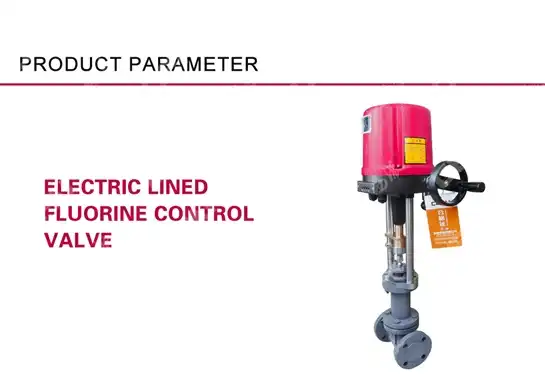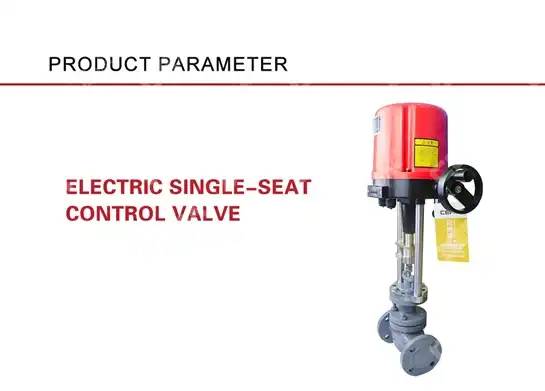Understanding the subtleties between electric control valves and pneumatic control valves is vital for optimizing control valve applications. Whereas pneumatic control valves depend on compressed discuss to work actuators, advertising effortlessness and unwavering quality, electric control valves utilize electric actuators for exact stream control and progressed handle control. Both valve sorts have interesting qualities suited to distinctive mechanical needs, making it vital to coordinate your application requirements with the right technology.
Fundamental Differences between Electric and Pneumatic Control Valves
Detailed comparison highlights three core differences essential for selecting the ideal valve solution:
- Actuation Strategy: Electric control valves utilize electric engines, giving exact positioning and tweaking capabilities. Pneumatic valves work through compressed air-driven stomachs or cylinders, empowering quick and solid responses.
- Control Exactness and Flow: Electric valves exceed expectations in fine throttling control and integration with PID controllers for optimized preparation control.
- Pneumatic valves offer strong weight control but may have restricted determination in stream regulation.
- Installation and Upkeep: Pneumatic valves require a detailed supply framework but tend to be easier and lighter. Electric valves rearrange channeling but include higher complexity in electrical frameworks and conceivably expanded support efforts.
If you prepare requests profoundly exact stream direction and consistent integration with computerized control frameworks, control valve applications are more appropriate. On the other hand, pneumatic control valves are best in situations where unwavering quality under unforgiving conditions and straightforwardness are prioritized.

Performance Comparison: Real Test Data Highlights
Independent studies assessing valve performance under identical process conditions reveal key insights:
- Response Time: Electric valves have an average response time of 0.15 seconds, which makes short-term adjusting processes more accurate. Pneumatic valves have an average response time of 0.4 seconds.
- Placement Accuracy: Electric actuators have a full-scale placement accuracy of ±0.5%, which is better than gas valves' ±2% accuracy because air can be compressed.
- Rate of leaking: Both valves keep leaking to a minimum (<0.1% valve coefficient), but electric valves always shut off more tightly when the pressure changes.
In situations where fast and accurate adjustment is needed, control valve applications work better. Pneumatic valves work well when reliability and easy pressure control are what's needed without strict placement requirements.
Exploring Control Valve Applications Across Industries
Control valve applications are used in many different fields, such as chemistry, oil and gas, power generation, water treatment, and food processing. Each of these fields has its own needs.
- When exact dosing, automatic process control, and connection with digital plant management systems are needed, electric control valves are the best choice.
- Pneumatic control valves are often used in places where there is a risk of explosion, in remote locations with limited power, or in other situations where safety and durability are very important.
If better control of fluid dynamics is important for your process, like stopping cavitation and choking effects, electric versions let you make fine-grained changes. Pneumatic valves work better in heavy-duty settings where stable control of linear or circular motion is needed when pressures change.
Pros and Cons of Electric Control Valves and Pneumatic Control Valves
| Feature | Electric Control Valve | Pneumatic Control Valve |
|---|---|---|
| Control Precision | High (±0.5% accuracy, suitable for PID control) | Moderate (±2% accuracy, suitable for basic throttling) |
| Response Speed | Fast (approx. 0.15 seconds) | Slower (approx. 0.4 seconds) |
| Installation Complexity | Requires electrical wiring and controls | Needs compressed air infrastructure |
| Maintenance | Moderate (electric actuator components) | Low (simple mechanical parts) |
| Operating Environment | Indoor/controlled environments recommended | Suitable for hazardous or explosive atmospheres |
Which of these valves you choose will depend on your operating surroundings and how accurate you need the controls to be. Control valve applications are better if you want a changing valve that can be changed in a lot of ways and is very accurate. Pneumatic valves are still a good choice for tough, low-maintenance jobs.
Why Choose CEPAI Group Co., LTD. for Your Control Valve Applications?
CEPAI Group brings industry-leading advantages in control valve technology and service excellence:
- Advanced solenoid and diaphragm motors in valves make them very durable and precise. They provide the best flow regulation and pressure control available.
- Different unique technologies make it easier to control linear and rotating motion while reducing the effects of leakage and cavitation.
- A wide range of goods: Globe valves, diaphragm valves, pneumatic devices, and more are all available as choices. This means that custom solutions can be made to meet the needs of complex processes.
- Offers Full Support Before and After the Sale: Technical advice, personalized help with choosing, setup, bug fixes, training, and clever online tracking to ensure long-term performance.
- Adhering strictly to international standards and conducting thorough tests at every stage, from checking the quality of raw materials to confirming the safety of the finished product, is what ISO Quality Management does.
- Strong ties make it easier to send products on time and make sure they are always available around the world.
If the highest level of quality assurance and expert help is important to your business, control valve applications are perfect for tough control valve jobs.

Key Suggestions for Selecting Between Electric and Pneumatic Control Valves
- Electric control valves are more accurate and work with more current control systems when you need to control flow in a complex way and integrate digital processes.
- For reliable and safe operation in dangerous areas or when little upkeep is needed in difficult circumstances, pneumatic control valves are the way to go.
- When a fast actuator reaction has a direct effect on how well a system works, electric valves offer faster, more consistent regulating actions.
- When there are budget limits and a well-established infrastructure for compressed air, control valve applications are a cost-effective option. Electric actuators work better than other types of actuators when low leaks and tight shut-off are needed under changing pressures.
Conclusion
The choice between electric and gas control valves has a big effect on how well and reliably process control works. Electric valves let you change flow and pressure with great accuracy and work well with computers. The working of pneumatic valves is reliable in harsh conditions, and they are easier to maintain. Control valves work best in a wide range of situations when they are chosen based on the needs of the process and the conditions of the surroundings.
Where to Buy Control Valve Applications
CEPAI Group Co., LTD. provides world-class solutions in Control Valve Applications tailored to your industrial needs. Benefit from precise valve sizing, expert actuator configurations, and seamless integration of process control elements. Reach out to explore our extensive product range and comprehensive services. Contact us at cepai@cepai.com to discuss your requirements and request a customized consultation. For detailed product and service information, please refer to the website: valveblog.jscepai.com.
References
1. Smith, J. (2021). Industrial Valve Technologies: Trends and Performance in Control Applications. Journal of Process Automation.
2. Nguyen, L.T. (2020). Advances in Pneumatic Actuation for Control Valves. International Journal of Fluid Control Engineering.
3. Patel, R.K., & Garcia, M. (2022). Comparative Analysis of Electric vs Pneumatic Valve Actuation in Petrochemical Plants. Journal of Industrial Equipment.
4. Wang, S. (2019). Valve Sizing and Flow Regulation in Complex Process Systems. Control Engineering Review.
5. Yamada, K. (2023). Enhancing Process Control Accuracy Using Electric Control Valves. Automation & Instrumentation Monthly.
6. Chen, H., & Lee, S. (2021). The Role of Actuators in Pressure and Flow Control: A Practical Review. Journal of Industrial Control Systems.
_1745994800896.webp)



